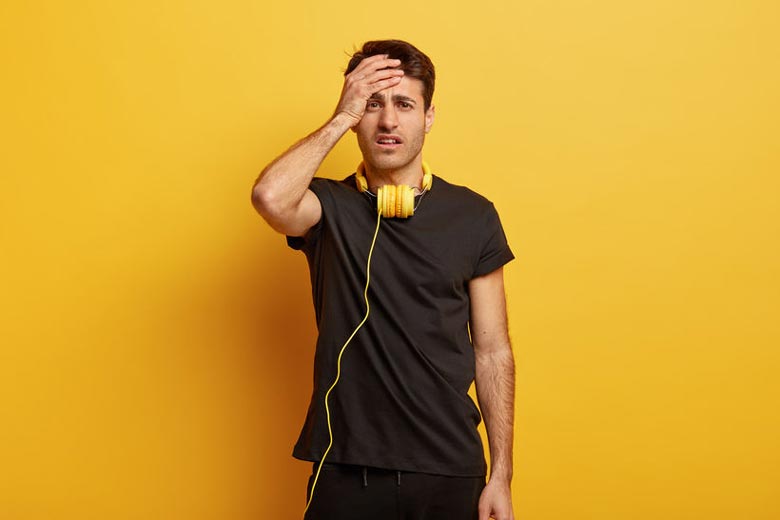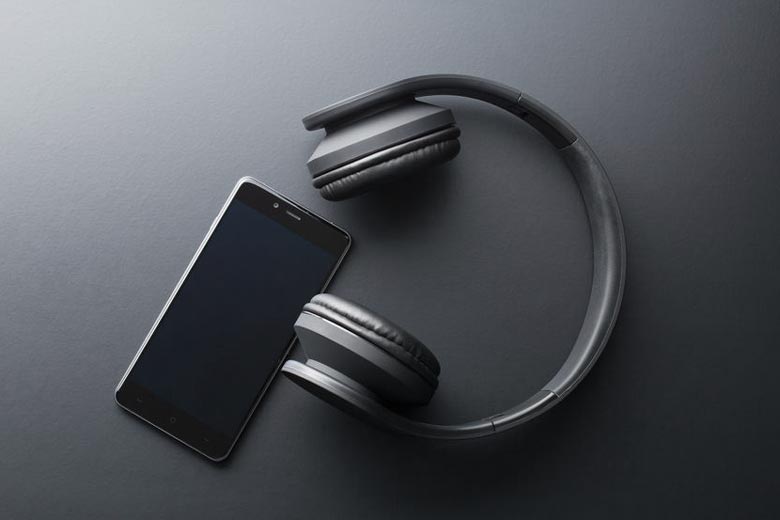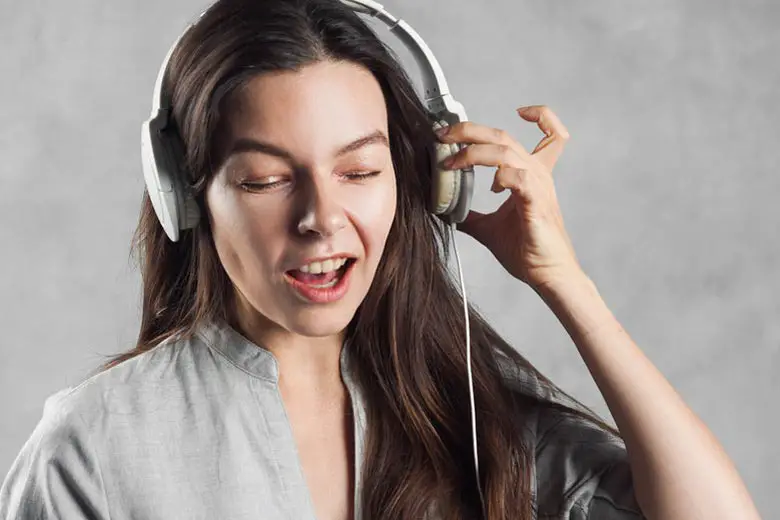Today, just about everyone, old or young, uses headphones; they’re practically a necessity these days. That’s why it’s such an aggravation when they stop working correctly. Whether your headphones are wireless or wired, chances are you’ve had at least one annoying issue with them at some point.
Here are the most common headphone problems:
- Headphones have no sound.
- Wireless headphones won’t connect to audio source.
- Headphones have poor sound quality.
- Earbuds that don’t fit right.
- Only one side of the headphones is working.
- Volume is too soft/loud.
- Audio keeps cutting out.
In this article, I’ll dive a little more deeply into these common issues and give you some insight into what may be causing them. I’ll also provide you with a few ways to fix those problems that are possible to do on your own, as well as tips to help you keep your headphones in peak condition for as long as possible. Now, let’s jump right in!

1. Headphones Have No Sound
One of the biggest problems you can have with your earbuds is that they just won’t work at all. There’s nothing worse than being stuck in an uncomfortable situation and not even having music to help you mentally escape from it.
At least if there’s static in headphones or the sound quality is terrible, you still have something to listen to, but there’s no getting around a complete lack of sound.
Luckily, this issue doesn’t always mean your headphones aren’t working. Here are some non-damage related reasons you might not be getting any audio:
- You haven’t connected your wireless headphones to your audio source.
- The battery in your wireless headphones is dead.
- Your wired earbuds have come unplugged from the jack.
- The volume on your audio source is muted.
- The volume on your headphones is muted.
If none of those things is the culprit, then your headphones may be defective. For example, there could be a loose wire or a problem with the plug (also called a pin). Additionally, there could be something wrong with the headphone jack in your audio source.
Spilling a large amount of liquid on your headphones can also short them out for good.
How To Fix Headphone With No Sound
If you’re lucky, your lack of sound will stem from one of the non-damage-related reasons listed above. If that’s the case, replugging the headphones, wirelessly reconnecting them, charging the battery, or raising the volume should solve the issue.
You can also try cleaning the headphone pin and the jack on your audio source. Use a clean, dry cloth for the plug and canned air for the jack. In rare cases, your headphones may not be compatible with your device, and although you think the pin fits securely, it’s actually the wrong shape or size.
If the problem is a loose or damaged wire, you may need to replace your headphones. Amazon.com sells small soldering kits, such as the Chandler Tool Soldering Iron Kit, which you can use to repair your headphones, but unless you know what you’re doing, you might not want to try it yourself.
If you do want to try, though, Wired has a pretty detailed guide on how to do it.
2. Wireless Headphones Won’t Connect to Audio Source
One of the most complained about issues with wireless headphones is that they won’t connect to the audio source. Again, there are a few simple reasons this could be happening.
Although some of them may seem obvious, it’s always best to check them first before assuming your headphones are dead.

How To Fix Wireless Headphones That Won’t Connect
Start by making sure your earbuds are fully charged. If they do, double-check to ensure your device has Bluetooth and is compatible with the headphones. Finally, make sure your headphones are on and that you enabled your device’s Bluetooth feature.
If all those things are good, you could be dealing with a pairing issue.
How To Pair Your Wireless Headphones
Here are ways to pair your wireless headphones:
- Keep your device and the earbuds within 3 ft (0.91 m) of each other when trying to connect.
- Move away from any other devices that could be causing interference with the pairing.
- Finally, make sure you’re trying to pair with the correct equipment. (Sometimes, it’s hard to know the difference with all the crazy default names devices use.)
If none of these things works, try powering both your device and your headphones off and back on again. If you’ve previously connected the two, go into your Bluetooth settings and “forget” the connection before powering down. Sometimes that’s enough to reset them and get them working again.
3. Headphones Have Poor Sound Quality
Bad sound quality can include anything from lots of static and fuzzy noises to tinny, metallic-sounding audio. Often, cheap headphones – $15 or less – have lousy sound quality simply because they aren’t well made.
However, if you’re getting poor audio from a decent pair of headphones, the problem is usually one of two things:
- There’s an issue with the headphone jack.
- You’re getting electronic interference from another device.
PC Mag has an extensive list of other things to check if you’re experiencing subpar sound quality, including looking at the audio source files, adjusting your equalizer settings, and disabling calls on your phone.
However, in my own, personal experience, one of those first two issues has always been the culprit.
How To Fix Poor Sound Quality
If there’s something wrong with your headphone jack, try cleaning it or blowing it out with canned air. Additionally, check to ensure you’re getting a secure fit when you plug the headphones into the jack. If not, try purchasing an adapter like the one mentioned above.
Electronic Interference
Now, as to the second issue – electronic interference – that’s the craziest one of all. This problem is one I often have with both my wired and wireless headphones, and although I’ve looked online and asked around, I can’t find a satisfactory answer as to why it happens.
I began noticing it while I was at work. I’d have my earbuds connected to my laptop via the headphone jack or using Bluetooth. Then I’d pick up my cellphone to check something, and my headphones would sound horrible! The closer my cell got to my ears, the worse they sounded.
I can’t tell you why it happens, but at least it’s an easy fix: just keep your other devices away from your headphones!
4. Earbuds That Don’t Fit Right
Although this issue doesn’t affect sound quality or how well your headphones perform, earbuds that don’t fit are still a huge problem. Sometimes, they fall out whenever you move your head. Other times, they’re so large, they feel like you’re trying to squeeze fat Sharpie markers in your ears!
Buying the best-sounding, most high-quality headphones won’t do you much good if they hurt too much to wear.
How To Fix Earbud That Don’t Fit Right
This one isn’t hard to remedy in most cases, although doing so may require you to spend a little extra money.
Replace the Ear Tips
Most earbuds come with detachable ear tips made from silicone. They’re easy to remove and replace with other silicone tips that are smaller (or larger) and that fit your ears more comfortably.

Furthermore, there’s no rule that says you have to stick to silicone ear tips. Foam Masters makes some excellent FoamMasters Ear Tips (available on Amazon.com) in three different sizes, ranging from small to large.
Comply Earphone Tips are another comfy memory foam option.
Take Earbuds Out Occasionally
Be sure you take a break occasionally and remove your earbuds. I know it’s tempting to sit somewhere for eight hours with them stuck in your ears the entire time, especially if you’re working in a crowded or distracting environment.
However, keeping earbuds, even comfortable ones, in your ears for that long can severely damage your hearing.
Read more: 4 Common Reasons Why Earbuds Are Uncomfortable (+ Solutions)
5. Only One Side of the Headphones Is Working
Ugh! The dreaded “one side only” headphone problem! It’s one of the worst because you can still hear your music, but it sounds so horrible! I don’t know about you, but I’d almost rather have my earbuds die completely than have only one side of them go out on me.
As with most of the other issues, check the simple stuff first. Look at the settings on your audio source and make sure you don’t have a right or left speaker turned off or muted.
If your headphones have separate volume controls for each side, check the volume on them, as well.
If it isn’t the settings, there’s probably an issue with the headphone jack, a loose wire, or internal damage to the headphones. However, if you’re using wireless headphones, you may also want to double-check to see if you’re using a matching pair of earbuds.
Don’t laugh!
We have half a dozen pairs of wireless headphones lying around our house. So it’s not unheard of for me to grab two earbuds and them each be from a different set.
How To Fix Headphones With Only One Side Working
If you have a matching set of wireless earbuds and adjusting the volume settings doesn’t solve this problem, it’s probably a hardware issue. Try restarting your device. Sometimes that helps.
Wired Headphones
If you’re using wired headphones, check for a secure fit at the headphone jack and clean it and the plug with some canned air and a dry cloth, as mentioned above.
If you see anything lodged in the jack (dirt, debris, etc.), take a toothpick and gently remove as much of it as possible. After you’ve done that, try your headphones again.
If they still don’t work correctly, plug them into another device to check them. If only one side is operating in both devices, there’s probably a damaged wire inside them, and you’ll either have to pull out the soldering kit or trash them.
Also Read: Why Do Earbuds Break So Easily? 3 Common Reasons
6. Volume Is Too Soft/Loud
Another common complaint I often hear from people is that the volume in their headphones is too loud or too soft. That rarely has anything to do with damage to the headphones. It’s almost always a volume or settings problem.
Furthermore, if the sound is too low, it could also be a problem with the original recording of whatever you’re listening to or a problem with the app you’re using.

How To Fix Headphones When Volume Is Too Soft/Loud
The easiest way to correct this issue is to adjust the volume on your source device. If your headphones have a separate volume control, change that, as well.
Occasionally, apps or websites (such as Youtube or Netflix) will have a third volume control embedded on the video you’re watching. If you still aren’t satisfied with the sound, check for that and adjust it.
Now, on rare occasions, the various volume settings aren’t the issue. Sometimes, things were recorded poorly by the original artists or recording studio. If the audio is too loud, that’s not a huge problem. Simply turn down the volume while whatever is playing, then turn it up again once it’s done.
Also Read: Why Your Headphones Are Too Loud: 5 Causes and Fixes
Boosting Audio in Apps
However, when the volume is too low, that can be a problem. I’ve noticed this issue with certain apps, usually those related to audiobooks, such as my library apps and the Audible app.
Unfortunately, with some apps, there’s nothing you can do to solve this problem. You just have to wait until you’re in a silent room and try listening to your audio again.
A few apps, though, have a volume magnification feature in their settings. This brief guide shows you how to boost your audio in the Overdrive app. Most, although not all, apps include a similar feature, so check their settings if they play audio too quietly.
7. Audio Keeps Cutting Out
Our final problem concerns audio that flickers off and on while you’re listening. In some cases, wireless headphones keep turning themselves off, forcing you to turn them on again manually.
Other times, the audio just sputters throughout your listening experience.
Sometimes, it happens regularly with no discernible cause. At other times, it only happens when there’s a triggering event, such as when you turn your head to the side or receive an alert on your phone.
Pay close attention to what’s going on when the audio goes out. It’ll be important in determining the underlying problem.
How To Fix Audio That Keeps Cutting Out
If your wireless headphones keep shutting off and staying off until you physically turn them back on again, your battery is most likely getting low. As the battery gets lower, the headphones often start powering down on their own.
After they sit idle for a few seconds, they regain enough charge to power on when you hit the button, but they’ll quickly turn off again.
Luckily, there’s a simple solution: Charge your earbuds!
Another possibility with wireless headphones is that you’re getting too far away from your source device. Once you start nearing the edge of the headphones’ range, the audio will get spotty, going in and out for brief periods until eventually, they lose sound for good.
Once you get back in range, your audio should resume.
Wired Headphones
If this issue occurs with your wired headphones, it could be a problem with the headphone jack or with the wires in the cord. To check the headphone jack, follow the steps I’ve mentioned several times earlier in the article.
If you suspect a problem with the cord, try rolling it between your thumb and middle finger. See if moving it causes the audio to sputter or go out again. If it does, then it’s definitely a wiring issue, and short of soldering it, there’s not much you can do.
However, another possibility is that your audio is simply being interrupted by alerts you’re receiving on your phone. For example, if you notice your audio goes out every time you receive a text message, that’s almost certainly the issue.
Short of putting your phone in “do not disturb” mode, there’s not much you can do about it unless you want to adjust your phone settings. You could always turn off notifications for messages while you’re listening to your music, book, podcast, etc. Just don’t forget to turn them back on again when you’re done.
How To Keep Your Headphones in Peak Condition
It can be incredibly frustrating when your headphones start experiencing problems, no matter what those problems may be.
Sometimes you won’t be able to fix your headphones, and your only choices will be trashing them or taking them into a shop for repairs. However, even if you can’t fix them, you can prevent plenty of common headphone issues.
Here are some final tips on how to keep your headphones in optimal working condition:
- Take care of the cord on wired headphones. Don’t wad it up, stretch it, or knot it.
- Keep your headphones in a case when not in use. Doing so will help protect the cord on wired headphones and keep dust and other debris off them. It’ll also prevent you from throwing them in the bottom of your bag and losing or damaging them.
- Clean them regularly. You should clean the earpieces on all headphones and the headphone plug on wired headphones with a clean cloth. This won’t only keep them working correctly; it’s also safer for you and can help prevent ear infections.
- Don’t share your headphones. Again, this is a safety issue, but it’s also the best way to ensure no one mistreats your headphones when you’re not using them.
- Charge wireless headphones regularly. Keep them charged! They won’t work otherwise.
If you follow these simple guidelines, your headphones just might last a little longer than some you’ve had in the past.